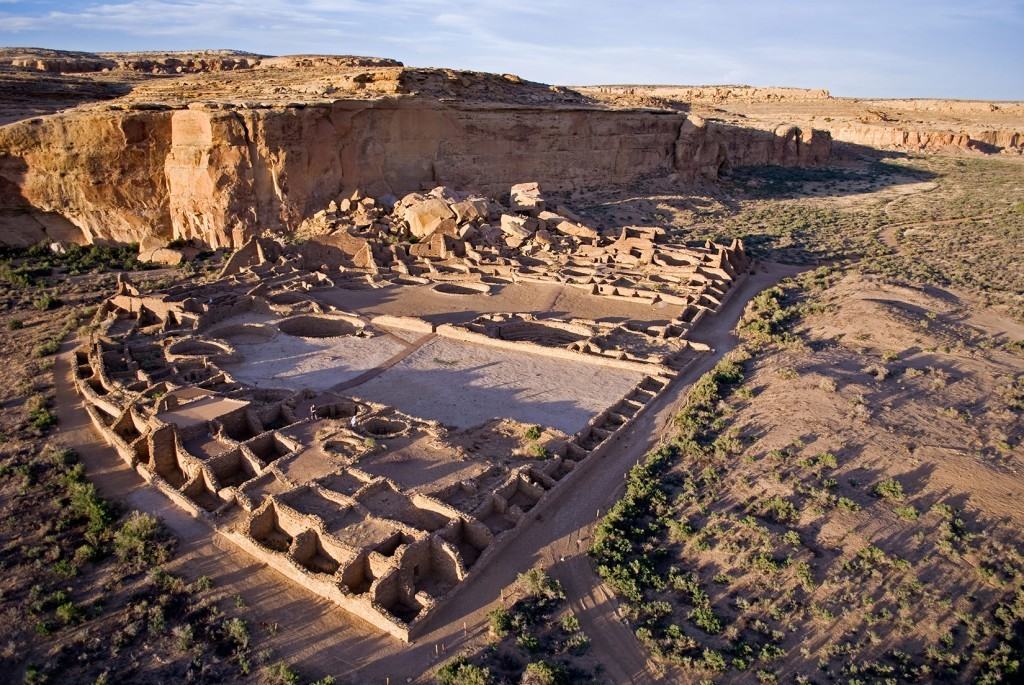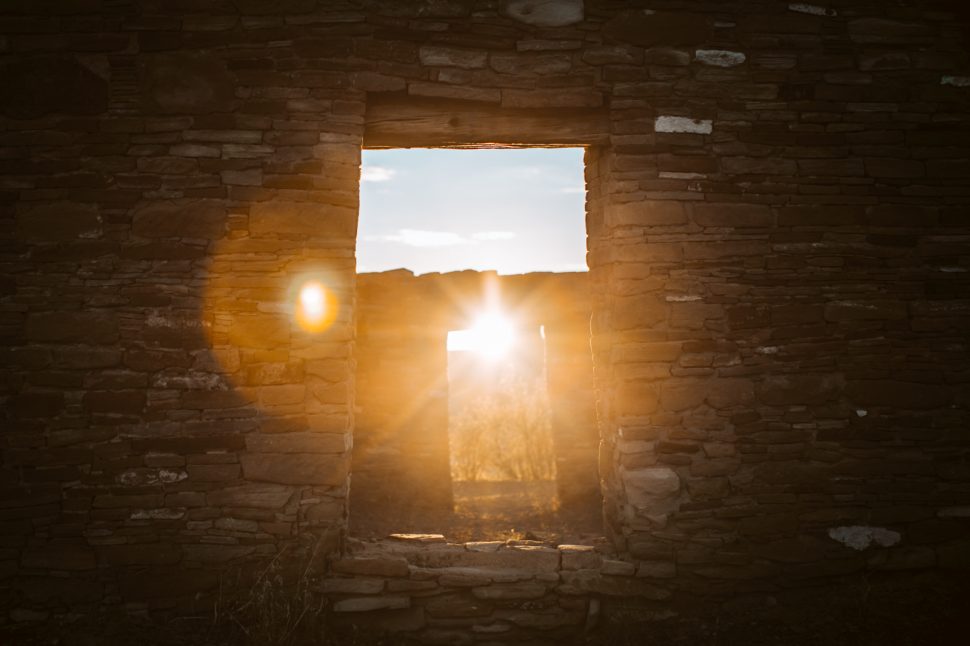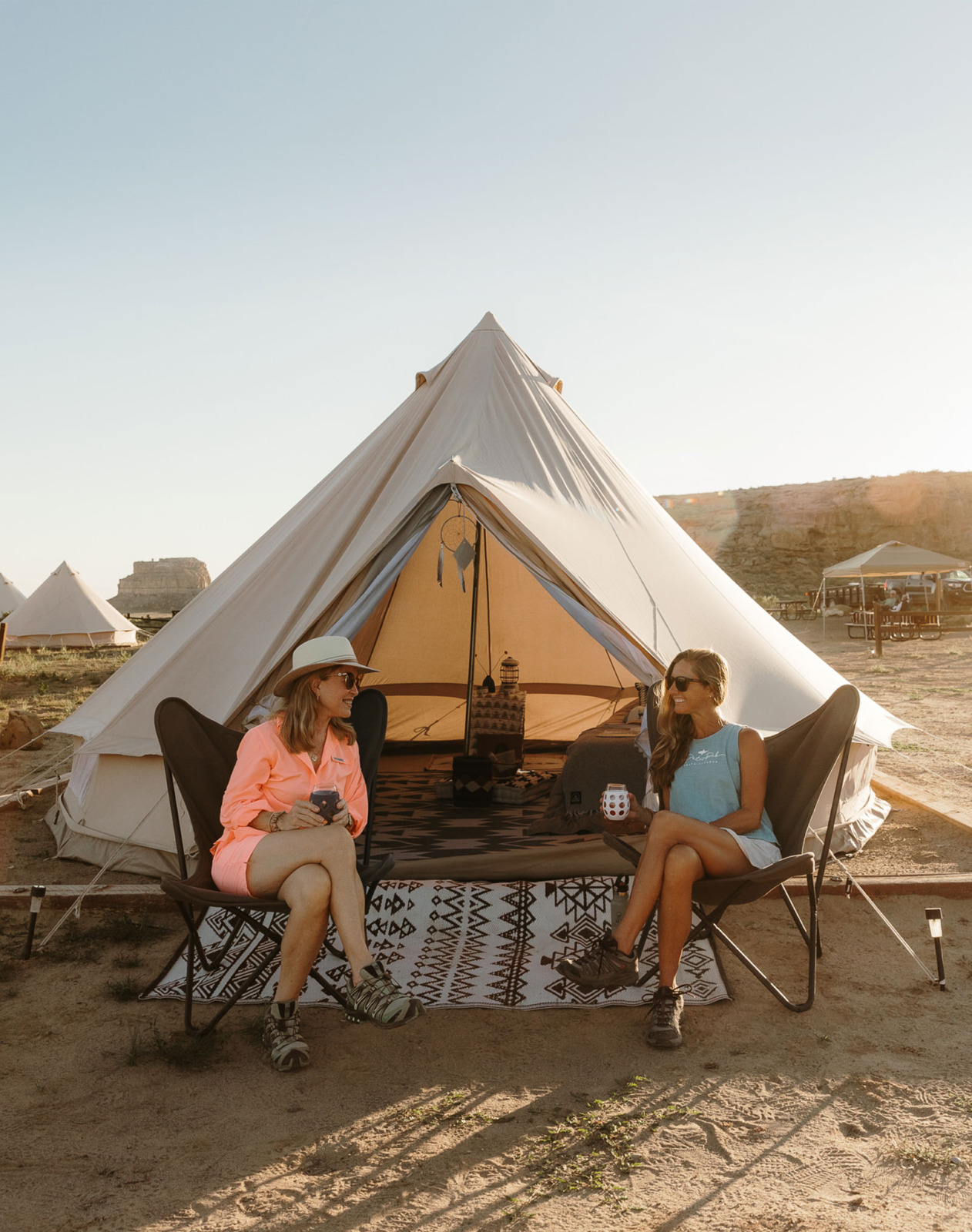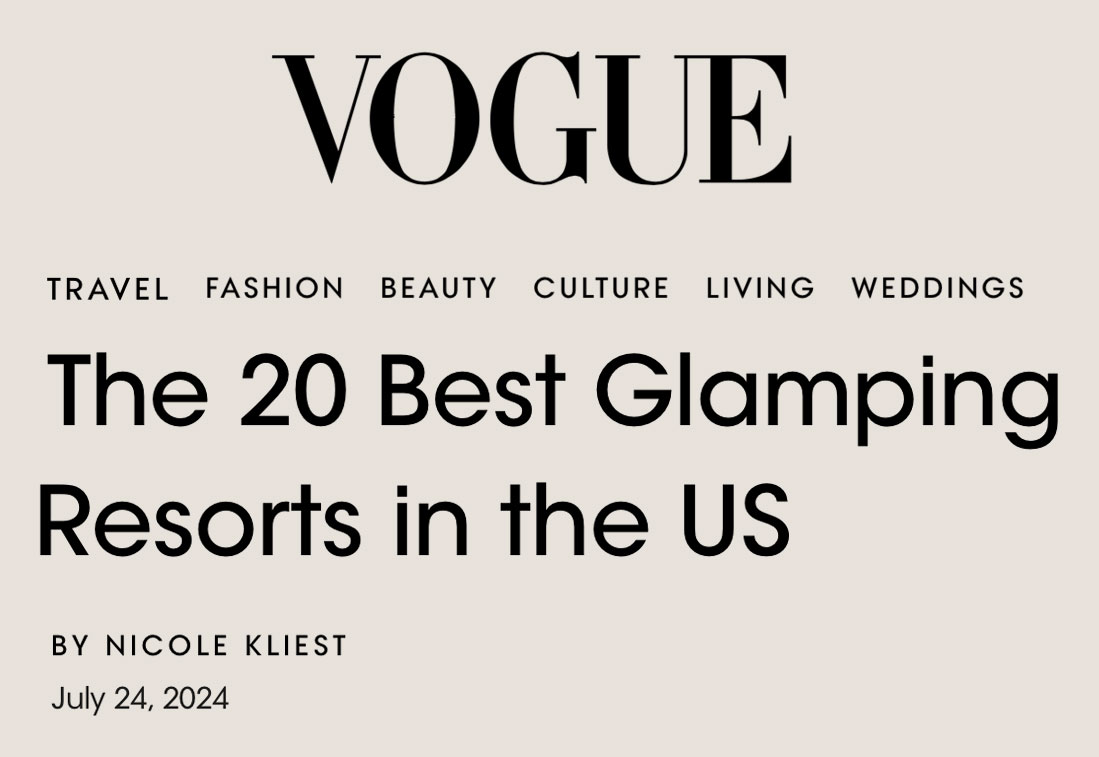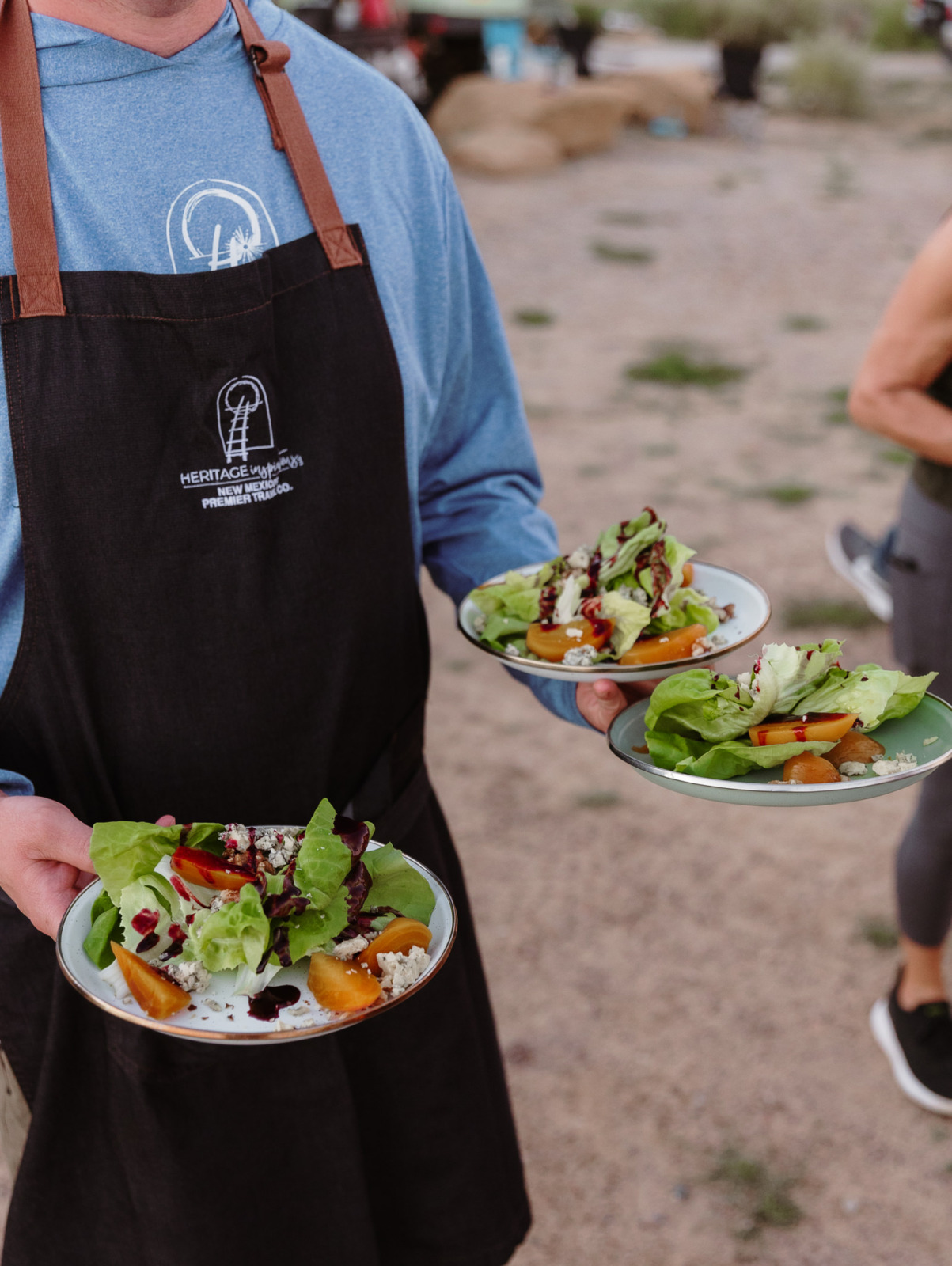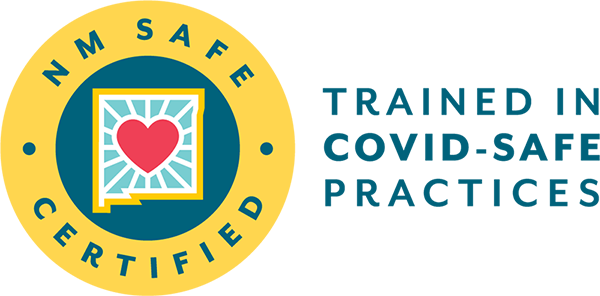Read about our Chaco Tours in Vogue, American Way Magazine, The New York Times, 360 West Magazine Article, The Dallas News, Adventure Pro Magazine, Cowboys & Indians Magazine, Let’s Go Camping taoStyle Blog, and in Our Stories: Chaco Canyon Glamping – New Moon and Equinox Expeditions
We’ve been preparing for your visit for over 1,000 years
Did you know the U.S. has a pre-historic Puebloan place of mystery that has been likened to Macchu Picchu, which is little seen or visited? And did you know that like Stonehenge, these ancient structures mark the passage of the sun with precise solar rays aligning along relief figures, doorways and petroglyphs on stone slab walls?
Transport yourself into another world, at Chaco Canyon! This UNESCO World Heritage Site and National Park lies on top of the southeastern Colorado Plateau’s physiographic province in the San Juan Basin and had a diverse thriving culture from 830 A.D. to 1250 A.D. It served as the heart of spiritual and ceremonial practices for the Chacoan people.
There are many solstice and equinox markers at Chaco Canyon, demonstrating that the people of Chaco incorporated celestial movements into a variety of their architecture, their art and their culture. You’ll discover how these alignments indicate the people possessed a well-developed knowledge of astronomy and its relationship to the seasons.
Chacoans had such advanced astronomical knowledge, and they used it to carefully align their great houses with the sun, presumably to witness indications of important calendar dates. We’ll observe light stream through two perfectly aligned east/west doors at Casa Rinconada, the largest kiva in Chaco. Only two times per year, during equinoxes, does the sunlight pierce through the center of these two doorways, thereby showing how the careful structural construction and the planned interplay of light and shadow, functioned as a calendrical marker for the Chacoan people.
Two-Day Tour Overview – Roads to the Soul Aren’t Paved
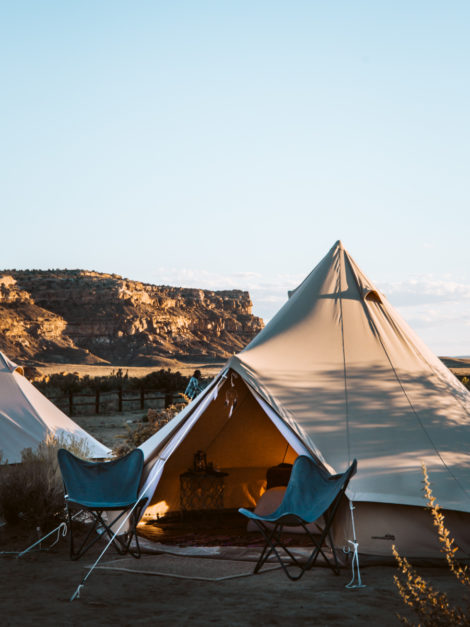 We’ll begin by meeting at 8:00 AM at Inn of the Five Graces in Santa Fe after enjoying a gourmet breakfast. Our three hour journey to Chaco Canyon is an educational and scenic route climbing over the Continental Divide and into the Colorado Plateau of the San Juan Basin. Of course, this is not a comparable journey to our ancestors who would have taken this arduous trip by foot, some 1,200 miles away from Chaco. Heritage Inspirations provides comfortable transportation and your guide narration will share both the modernity and ancestral cultural crossroads exploring what is known as “checkerboard land”.
We’ll begin by meeting at 8:00 AM at Inn of the Five Graces in Santa Fe after enjoying a gourmet breakfast. Our three hour journey to Chaco Canyon is an educational and scenic route climbing over the Continental Divide and into the Colorado Plateau of the San Juan Basin. Of course, this is not a comparable journey to our ancestors who would have taken this arduous trip by foot, some 1,200 miles away from Chaco. Heritage Inspirations provides comfortable transportation and your guide narration will share both the modernity and ancestral cultural crossroads exploring what is known as “checkerboard land”.
On day one, we will explore the largest Great House, Pueblo Bonito, a Spanish word for “pretty village.” This important epicenter of ancestral homeland showcases the core-and-veneer walls that distinguish Chacoan great-house construction. From here, we will follow the Petroglyph trail connecting us to the Great House of Chetrl Ketl. It lies along the canyon wall and is 1/4 miles in length.
Throughout the American Southwest, rock images, or petroglyphs were probably intended mostly as visual communications for things like clan symbols, records of important events during migrations, and memory aids for recalling stories, songs, and ceremonies. Witness one of these rock images along the canyon wall that has often been identified as cacao pods, which would have originated over 1200 miles to the south. Following our exploration of this great house, beginning with a single-story room block from around 1010 A.D., we make our way to our glamping camp to enjoy a handcrafted cacao elixir enjoyed in replicated pottery vessels discovered in Pueblo Bonito. Savor decadent appetizers and drinks as you take in tent views in your butterfly chairs of Fajada Butte.
On day two, you’ll be up before the crack of dawn. During New Moon expeditions, we’ll set out on a morning twilight hike to the Fajada Butte Overlook, where we’ll watch the striking colors of the Belt of Venus form in the sky above the canyon. During the Equinox expedition, we’ll watch the equinox sunrise at Casa Rinconada, where we’ll observe the sunrise aligning with the ancient east and west doors of this large, round kiva. The symmetry of the axes creates a perfect circle, and some speculate that it physically represents the ancestral Puebloan cosmos and served as an important religious center.
After the viewing, you’ll return to camp for a full gourmet breakfast and have a half-day of more Chaco Canyon explorations, hiking options on the Pueblo Alto Trail to the Pueblo Bonito Overlook that offers panoramic views and begins to paint for you the magnificence of the Chacoan civilization or more time at Chetrl Ketl.
Heritage Inspirations plans all the logistics and facilitates all of your luxurious glamping, (Don’t know what glamping is? See the glamping explanation below) so that you can simply experience this memorable opportunity on New Moon alignments or Fall Equinox. Our informative guides offer you a special insight and knowledge to the area in addition to providing you with the tools needed to dive deep into the mysteries of Chaco.
Not only can you experience this major ancestral Puebloan center of migration, grand construction, and cultural integration, but you can do it at an equinox (during September dates) to witness the precision engineering, elaborate ingenuity, and timeless architecture documenting the sun’s movement across the sky.
Your luxurious journey to the National Park of Chaco Canyon will transcend this ancient site, at its most special time.
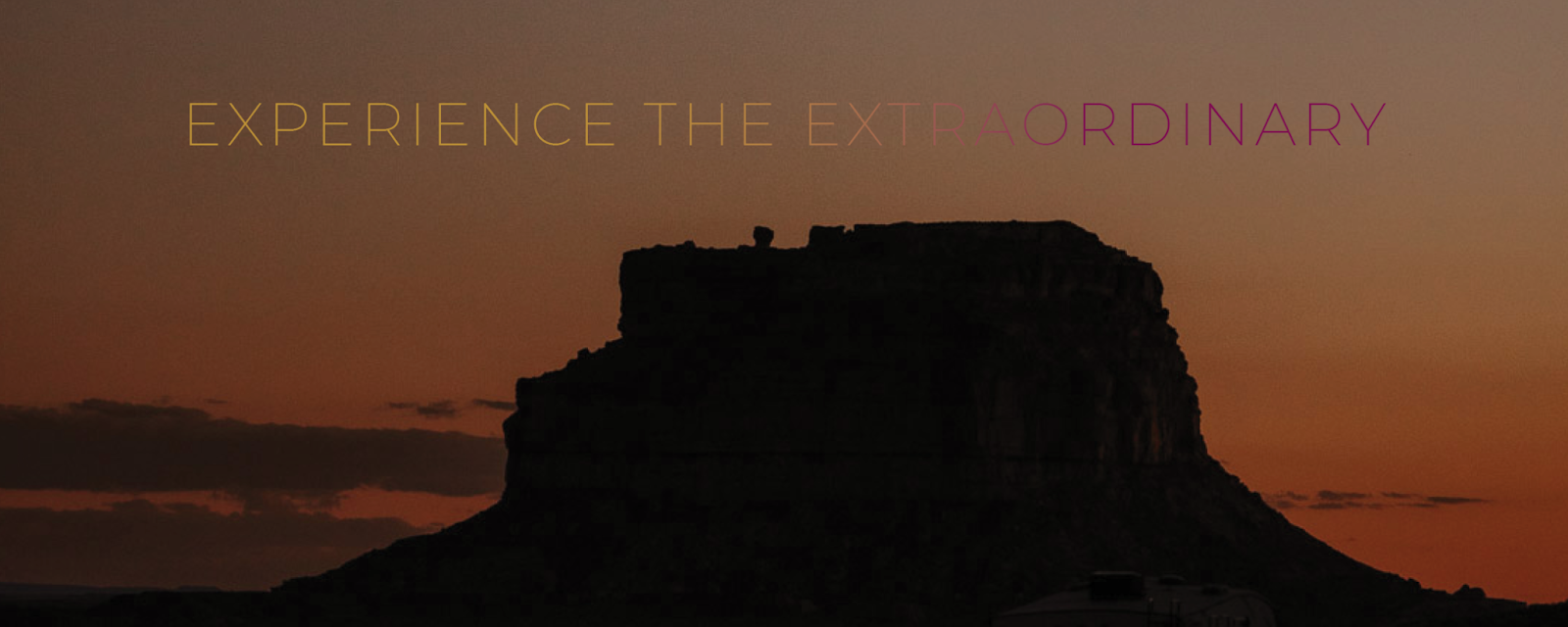
The Mysteries of Chaco Canyon Glamping Expedition (4 Nights)
Maximum of 7 Tents (14 Guests)
Day 1: Arrival in Santa Fe
- Check-in at The Five Graces
- In-room welcome gift and materials
Day 2: Santa Fe
- Cocktail reception
- Private screening of The Mysteries of Chaco Canyon, including an introduction by a special guest speaker
- Private three-course dinner at The Pink Adobe
Day 3: The New Moon
- Early morning departure from Santa Fe to Chaco Canyon for the Glamping Expedition
- Glamping experience at Chaco Canyon
Day 4: Chaco Canyon
- Morning in Chaco Canyon
- Return to The Five Graces for your final night
- Cocktail farewell reception
**Note: Our May trip is a 3-night experience, with 2 pre-stay nights at The Five Graces and 1 night at the Glamping Base Camp. Our September trip is both the Fall Equinox and New Moon.
Taos Glamping Expedition + Perseid Meteor Shower (5 Nights)
Maximum of 6 Tents (12 Guests)
Day 1: Arrival in Santa Fe
- Check-in at The Five Graces
- In-room welcome gift and materials
Day 2: Santa Fe
- Cocktail reception
- Private screening at The Five Graces, including an introduction by a special guest speaker
- Private three-course dinner at The Pink Adobe
Day 3: The New Moon
- Early morning departure from Santa Fe to Taos Glamping Base Camp
- Set up and stargazing at the base camp
Day 4: Taos Glamping Base Camp
- Full day at the glamping base camp, including Perseids meteor shower viewing
Day 5: Final Night in Taos
- Travel to Hotel Monte Sagrado in Taos for the final night of your experience
Don’t miss out on this enchanting immersively curated
guided tour with Heritage Inspirations!
Book now, as these expeditions are space limited to seven tents and sell out fast.
What is Glamping?
Glamping is a deep passion because it combines remote outdoor experiences, with luxurious camping facilities, so you do not have to forsake pleasure and comfort while experiencing the great, but hard to reach, outdoor locations. It’s a way to experience the untamed and completely unique parts of the world, like in Chaco Canyon, without having to sacrifice creature comforts. You can enjoy a fusion of glamour and camping, glamping, while authentically experiencing the most awe-inspiring night sky of the Colorado Plateau in a spacious canvas tent, with non-camplike amenities, such as a raised wooden bed-frame, memory foam mattress, bedside table, butterfly canvas chairs, plush rugs and southwest textiles. Glamping in luxury while meditating on ancient Puebloan architecture and culture and savoring the views from your tent at Fajada Butte – it can’t get much better than that!
Read our recent Newsletter to learn more about Glamping with Heritage Inspirations.
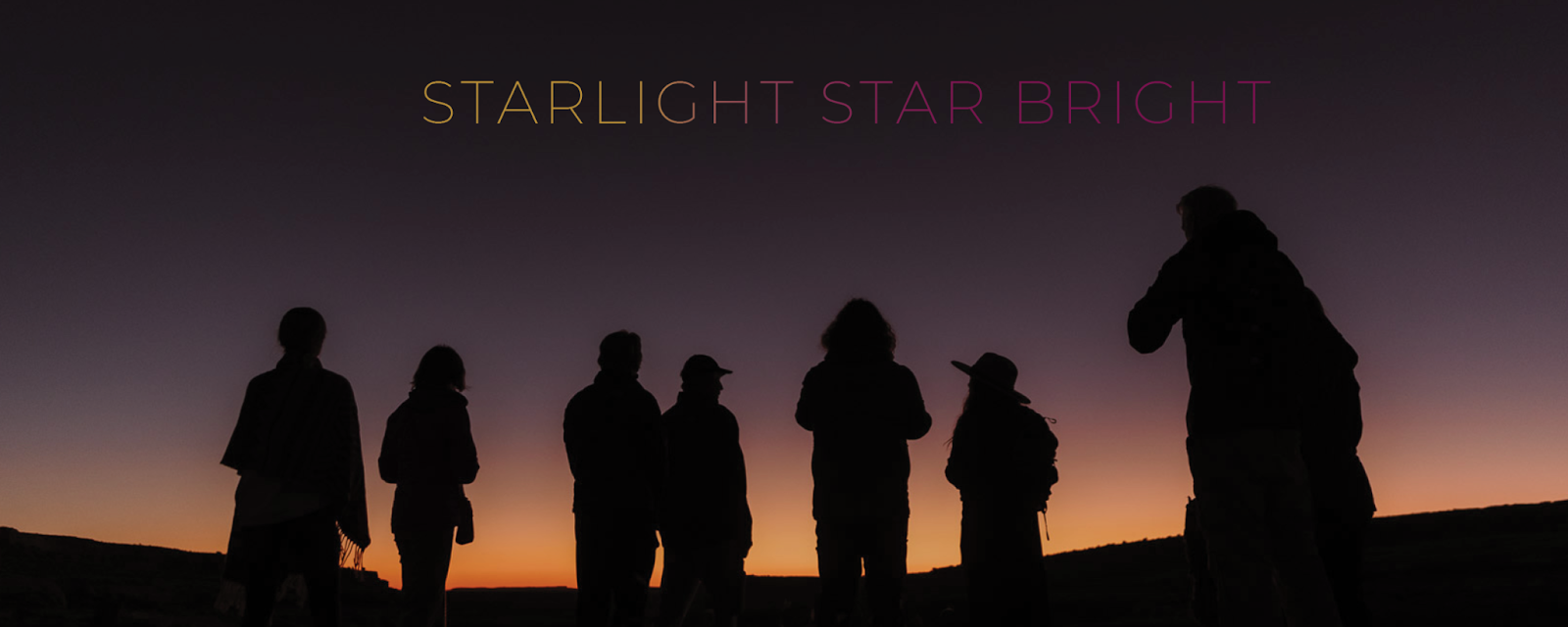
A Celestial Event
At night, you’ll be astounded by a sky lit by the glowing Milky Way and thousands of resplendent stars in this International Dark-Sky Park. Far from the light pollution of city skies, you’ll have the opportunity to reconnect to the rhythms and motions of the starry vault as we ponder the ancient astronomy of ancestral Puebloans. Led by a knowledgeable and enthusiastic cultural astronomer, you’ll go on a laser-guided tour of ancient Arabian skies, enriched with the cultural backstories of star names that we still use today and supplemented by telescopic views of planets, star clusters and distant galaxies.
What is Cultural Astronomy?
Cultural astronomy is the study of how societies relate to celestial objects and their appearance in the sky. Drawing from astronomy, social science and the humanities, cultural astronomers don’t study the physical properties of the stars themselves, but rather the ways that people draw constellations among the stars and tell stories about them. Cultural astronomy that focuses on ancient built structures is called archaeoastronomy.
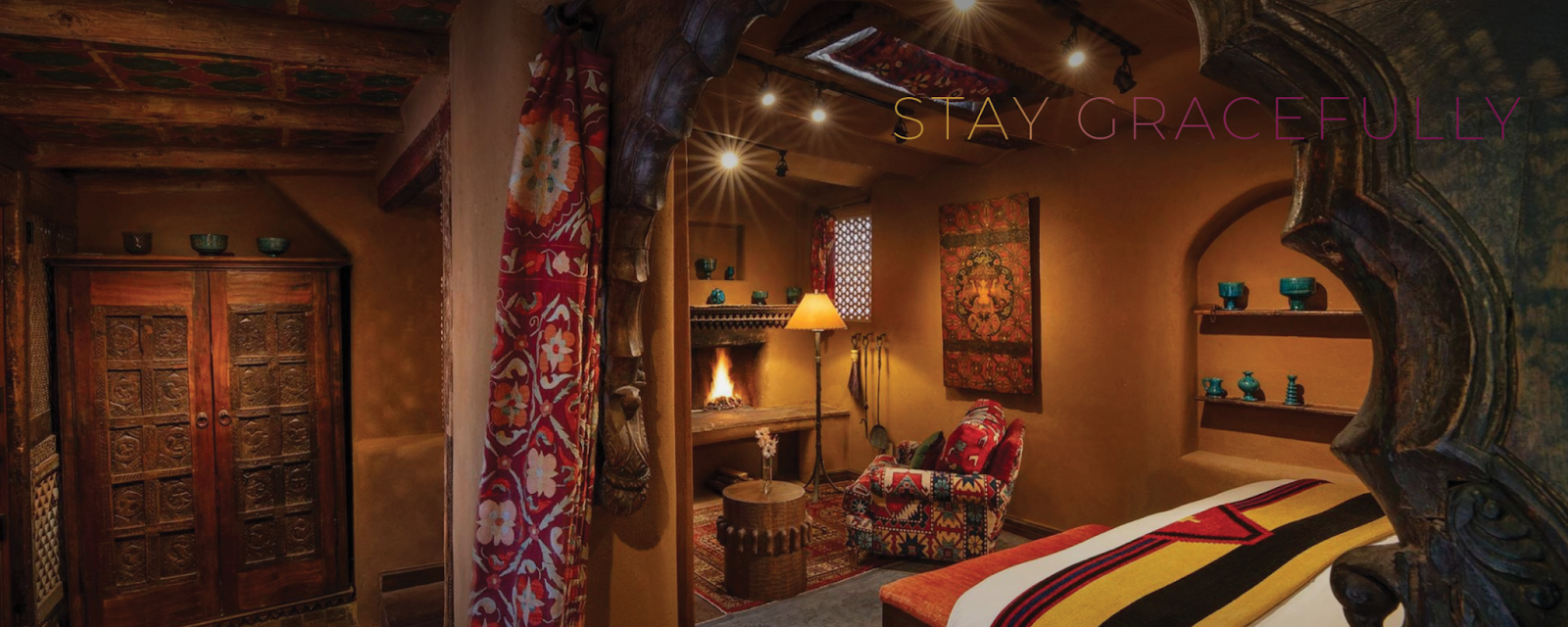
The Five Graces
While we transport you to New Mexico’s dream landscapes, The Inn of the Five Graces will not only provide the anchor to your journey but will also ground you spiritually in the heart of the City Different. This Relais & Châteaux property is known for its exquisite guest experience, with deeply luxurious guest suites that are carefully planned oases of beauty and relaxation. In 2025, we’re enhancing our offerings with private excursions that channel this attention to detail and magical spirit. Additionally, we’ll host a pre-trip welcome gathering with drinks and appetizers, and provide special add-ons like spa days to bookend your journey.
We are so grateful for the feature in Vogue for Glamping and our special collaboration with Inn of the Five Graces.
INSPIRED EXECUTIVE CHEF
JOSH WILLETTE
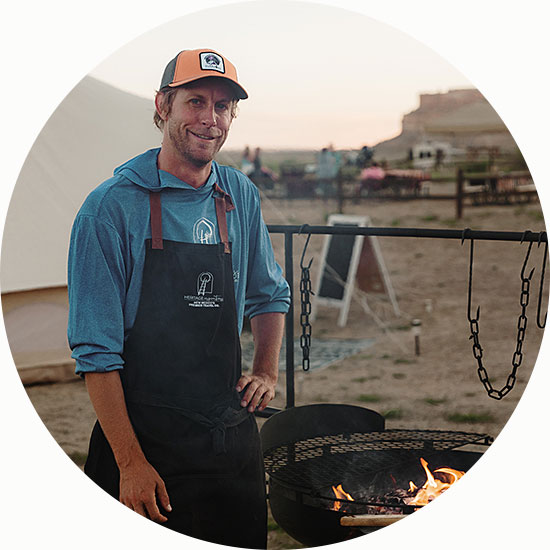
Josh grew up in Taos but traveled around the West as he developed his culinary career. In Napa, Josh ran a catering company called Smoke Open Fire Catering. The premise of the company was to cook in front of the guests, using only local meats and vegetables, on an open fire and in a rustic outdoor setting. These dinners were often held at wineries and served as extravagant wine paired meals. “I got to work very closely with not only the wineries, but with the growers and farmers in the area, to create experiences that combined a rustic feel with the elevated quality of fine dining. The experience is similar to what we create with the glamping excursions at H.I.,” Josh explains.
INSPIRED CULTURAL ASTRONOMER
DANIELLE ADAMS
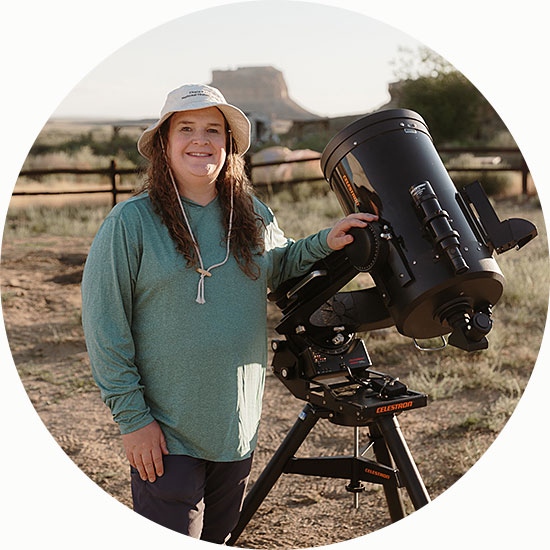
Dr. Danielle Adams is a cultural astronomer who studies the development and transformations of indigenous Arabian astronomy, as revealed in Arabic poetry, historical literature and modern-day star names. She is active in informal astronomy education, speaking to various groups about Arabian cultural astronomy and the heritage of the many Arabic star names that astronomers still use today, and she uses the inspiration of pristine desert skies to advocate for the modern-day preservation of dark skies. Danielle is an Organizing Member of the International Astronomical Union’s Commission C5 on Cultural Astronomy (IAU C5) and a member of IAU’s Working Group on Star Names (WGSN). She lives in Flagstaff, Arizona, the world’s first International Dark-Sky City, where she serves as the interim executive director for the Flagstaff Dark Skies Coalition.
































